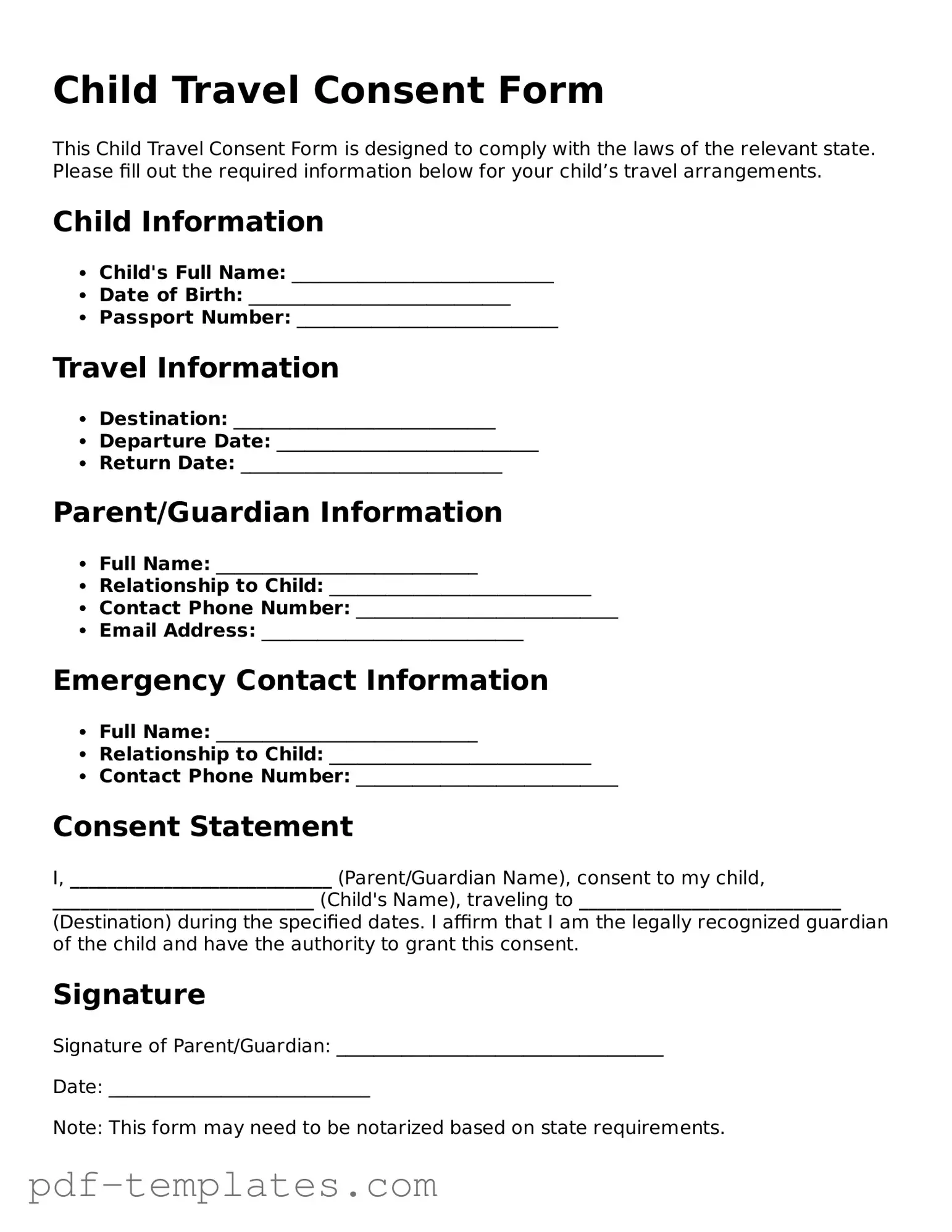The Child Travel Consent Form is similar to a Power of Attorney document. Both forms grant authority to another person, allowing them to make decisions on behalf of a child. In the case of a Power of Attorney, this authority can extend beyond travel, covering medical and financial decisions. However, the Child Travel Consent Form is specifically focused on travel-related permissions, ensuring that a child can travel with a designated adult without legal complications.
Another similar document is the Minor Consent Form. This form allows a minor to consent to certain activities without parental approval, such as medical treatment or participation in specific events. While the Minor Consent Form is broader in scope, the Child Travel Consent Form specifically addresses travel situations. Both documents aim to clarify consent and protect the rights of minors in different contexts.
The Travel Consent Letter is another document that resembles the Child Travel Consent Form. A Travel Consent Letter is often a simple letter signed by a parent or guardian, giving permission for a child to travel with another adult. While it may not have the same legal weight as a formal consent form, it serves a similar purpose by providing evidence of consent. Both documents aim to prevent misunderstandings during travel.
Next, the Medical Consent Form shares similarities with the Child Travel Consent Form. This form allows parents or guardians to authorize medical treatment for their child in their absence. Like the Child Travel Consent Form, it ensures that another adult can act in the child's best interest when necessary. Both documents are essential for protecting a child's well-being in situations where parents cannot be present.
The Child Custody Agreement also has parallels with the Child Travel Consent Form. This agreement outlines the rights and responsibilities of each parent regarding their child's care and travel. While the Child Travel Consent Form focuses solely on travel, a custody agreement may include travel provisions. Both documents help clarify who can make decisions for the child.
The Authorization for Release of Information is another document that can be compared to the Child Travel Consent Form. This form allows parents to permit another individual to access certain information about their child, such as medical records or school information. While the Child Travel Consent Form is focused on travel, both documents are about granting permission to another adult to act on behalf of a child.
The Child Care Authorization Form is similar as well. This form allows parents to designate someone to care for their child temporarily. Like the Child Travel Consent Form, it is about granting authority to another adult. However, the Child Care Authorization Form is broader, covering daily care and supervision, while the travel form is specific to travel-related situations.
Lastly, the Temporary Guardianship Form is comparable to the Child Travel Consent Form. This document allows parents to appoint a temporary guardian for their child, which can include travel situations. Both forms ensure that another adult has the legal authority to make decisions for the child in the parents' absence. They provide peace of mind for parents when their child is away from home.
